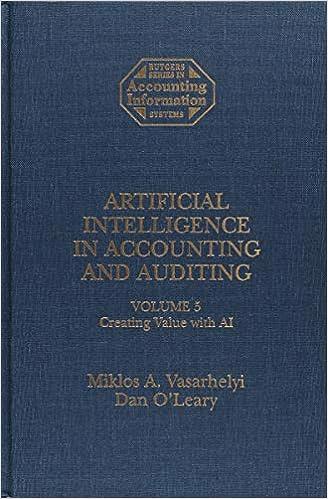


Questions 2-8: Inventory journal entries and inventory analysis Sports Shop Ltd (the Shop), a GST registered company, has a 30 June year end. Included in the general ledger are accounts for Cash, Accounts Receivable, Inventory, Accounts Payable, GST Clearing, Discounts Lost, Cost of Goods Sold, Sales Revenue, Sales Discounts, and Sales Returns and Allowances. The Shop has been operating using the gross purchases method under a perpetual inventory system. Management is interested in comparing the gross purchases method to the net purchases method, as well as inventory and cost of goods sold calculations under a periodic system. Lucky you have been employed as a consultant to help with this. All of the Shop's suppliers are GST registered, as well, and all purchases and sales take place in New Zealand on credit. Management has decided to use the James brand of basketball for this exercise. On 1 July, there was a balance of $2,300 in Accounts Payable relating to a James basketball purchase completed in June. Had the net purchases method been used, the balance would have been $2,254. The following transactions then occurred during July 2019. Management rounds all calculations to two decimal places. Date 2 July James Basketball Transaction details: Paid the Accounts Payable within the discount period. (i) 7 July Sold basketballs for $4,600, terms 2/10, n/30, including GST, to Westbrook Ltd. (iii) 12 July Received $2,254 from Westbrook Ltd within the discount period, representing payment for 12 of the invoiced amount. (iv) 20 July Purchased 100 basketballs from Curry Ltd for $2,600, not including GST, terms 2/7, n/30. (v) 31 July Paid Curry Ltd the amount due after the discount period. The inventory on 1 July consisted of 20 basketballs for $484, purchased on 15 June, and 98 basketballs for $1,960 purchased on 28 June. These figures are net of GST and the 2% discount because both of these purchases were paid within the discount period. If an ending inventory count on 31 July shows 130 James basketballs on- hand, what would be the total cost of ending inventory calculated using the periodic weighted average method, assuming the net purchases method is used to record inventory events? Round your unit cost to two decimal places and your total cost to the nearest dollar. The inventory on 1 July consisted of 20 basketballs for $484, purchased on 15 June, and 98 basketballs for $1,960 purchased on 28 June. These figures are net of GST and the 2% discount. Both of these purchases were paid within the allowed discount period. If an ending inventory count on 31 July shows 130 James basketballs on- hand, what would be the total cost of ending inventory under FIFO, assuming the gross purchases method were used to record inventory events? Questions 2-8: Inventory journal entries and inventory analysis Sports Shop Ltd (the Shop), a GST registered company, has a 30 June year end. Included in the general ledger are accounts for Cash, Accounts Receivable, Inventory, Accounts Payable, GST Clearing, Discounts Lost, Cost of Goods Sold, Sales Revenue, Sales Discounts, and Sales Returns and Allowances. The Shop has been operating using the gross purchases method under a perpetual inventory system. Management is interested in comparing the gross purchases method to the net purchases method, as well as inventory and cost of goods sold calculations under a periodic system. Lucky you have been employed as a consultant to help with this. All of the Shop's suppliers are GST registered, as well, and all purchases and sales take place in New Zealand on credit. Management has decided to use the James brand of basketball for this exercise. On 1 July, there was a balance of $2,300 in Accounts Payable relating to a James basketball purchase completed in June. Had the net purchases method been used, the balance would have been $2,254. The following transactions then occurred during July 2019. Management rounds all calculations to two decimal places. Date 2 July James Basketball Transaction details: Paid the Accounts Payable within the discount period. (i) 7 July Sold basketballs for $4,600, terms 2/10, n/30, including GST, to Westbrook Ltd. (iii) 12 July Received $2,254 from Westbrook Ltd within the discount period, representing payment for 12 of the invoiced amount. (iv) 20 July Purchased 100 basketballs from Curry Ltd for $2,600, not including GST, terms 2/7, n/30. (v) 31 July Paid Curry Ltd the amount due after the discount period. The inventory on 1 July consisted of 20 basketballs for $484, purchased on 15 June, and 98 basketballs for $1,960 purchased on 28 June. These figures are net of GST and the 2% discount because both of these purchases were paid within the discount period. If an ending inventory count on 31 July shows 130 James basketballs on- hand, what would be the total cost of ending inventory calculated using the periodic weighted average method, assuming the net purchases method is used to record inventory events? Round your unit cost to two decimal places and your total cost to the nearest dollar. The inventory on 1 July consisted of 20 basketballs for $484, purchased on 15 June, and 98 basketballs for $1,960 purchased on 28 June. These figures are net of GST and the 2% discount. Both of these purchases were paid within the allowed discount period. If an ending inventory count on 31 July shows 130 James basketballs on- hand, what would be the total cost of ending inventory under FIFO, assuming the gross purchases method were used to record inventory events









